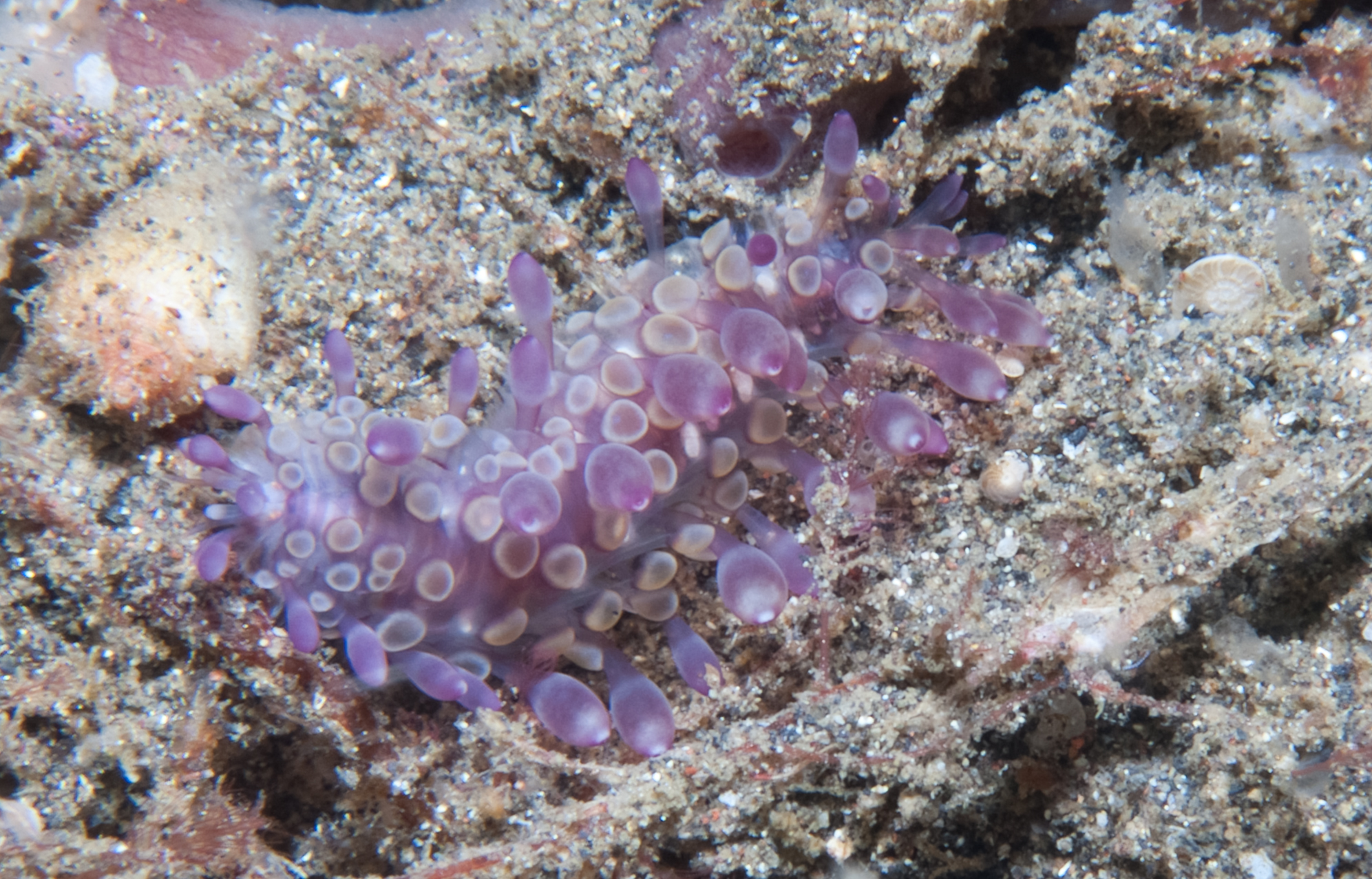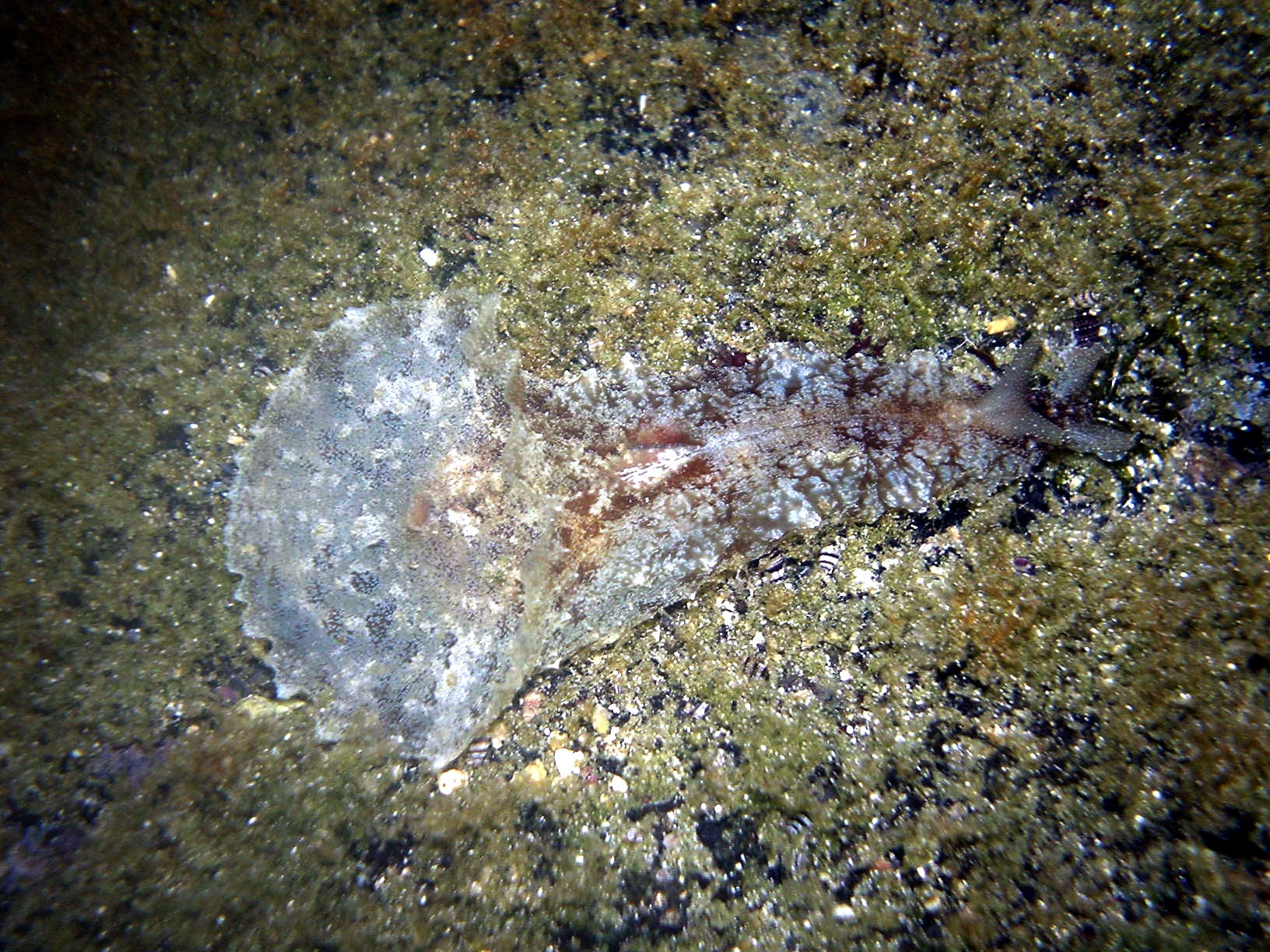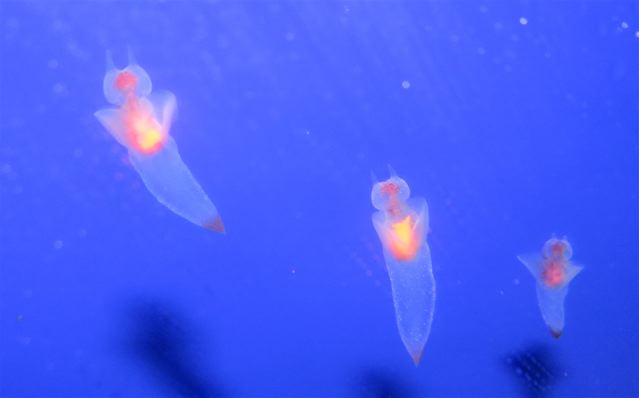|
Parapodia
In invertebrates, the term parapodium ( Gr. ''para'', beyond or beside + ''podia'', feet; plural: parapodia) refers to lateral outgrowths or protrusions from the body. Parapodia are predominantly found in annelids, where they are paired, unjointed lateral outgrowths that bear the chaetae. In several groups of sea snails and sea slugs, 'parapodium' refers to lateral fleshy protrusions. __TOC__ Annelid parapodia Most species of polychaete annelids have paired, fleshy parapodia which are segmentally arranged along the body axis. Parapodia vary greatly in size and form, reflecting a variety of functions, such as gas exchange, anchorage, protection and locomotion. General description Parapodia in polychaetes can be uniramous (consisting of one lobe or ramus) but are usually biramous (two lobes or rami). In the latter case, the dorsal lobes are called notopodia and the ventral lobes neuropodia. Both neuropodia and notopodia may possess a bundle of chaetae (neurochaetae and notochaet ... [...More Info...] [...Related Items...] OR: [Wikipedia] [Google] [Baidu] |
Annelid Anatomy
The annelids (Annelida , from Latin ', "little ring"), also known as the segmented worms, are a large phylum, with over 22,000 extant species including ragworms, earthworms, and leeches. The species exist in and have adapted to various ecologies – some in marine environments as distinct as tidal zones and hydrothermal vents, others in fresh water, and yet others in moist terrestrial environments. The Annelids are bilaterally symmetrical, triploblastic, coelomate, invertebrate organisms. They also have parapodia for locomotion. Most textbooks still use the traditional division into polychaetes (almost all marine), oligochaetes (which include earthworms) and leech-like species. Cladistic research since 1997 has radically changed this scheme, viewing leeches as a sub-group of oligochaetes and oligochaetes as a sub-group of polychaetes. In addition, the Pogonophora, Echiura and Sipuncula, previously regarded as separate phyla, are now regarded as sub-groups of po ... [...More Info...] [...Related Items...] OR: [Wikipedia] [Google] [Baidu] |
Annelid
The annelids (Annelida , from Latin ', "little ring"), also known as the segmented worms, are a large phylum, with over 22,000 extant species including ragworms, earthworms, and leeches. The species exist in and have adapted to various ecologies – some in marine environments as distinct as tidal zones and hydrothermal vents, others in fresh water, and yet others in moist terrestrial environments. The Annelids are bilaterally symmetrical, triploblastic, coelomate, invertebrate organisms. They also have parapodia for locomotion. Most textbooks still use the traditional division into polychaetes (almost all marine), oligochaetes (which include earthworms) and leech-like species. Cladistic research since 1997 has radically changed this scheme, viewing leeches as a sub-group of oligochaetes and oligochaetes as a sub-group of polychaetes. In addition, the Pogonophora, Echiura and Sipuncula, previously regarded as separate phyla, are now regarded as sub-groups of polychae ... [...More Info...] [...Related Items...] OR: [Wikipedia] [Google] [Baidu] |
Annelid Parapodium Anatomy
The annelids (Annelida , from Latin ', "little ring"), also known as the segmented worms, are a large phylum, with over 22,000 extant species including ragworms, earthworms, and leeches. The species exist in and have adapted to various ecologies – some in marine environments as distinct as tidal zones and hydrothermal vents, others in fresh water, and yet others in moist terrestrial environments. The Annelids are bilaterally symmetrical, triploblastic, coelomate, invertebrate organisms. They also have parapodia for locomotion. Most textbooks still use the traditional division into polychaetes (almost all marine), oligochaetes (which include earthworms) and leech-like species. Cladistic research since 1997 has radically changed this scheme, viewing leeches as a sub-group of oligochaetes and oligochaetes as a sub-group of polychaetes. In addition, the Pogonophora, Echiura and Sipuncula, previously regarded as separate phyla, are now regarded as sub-groups of polychaet ... [...More Info...] [...Related Items...] OR: [Wikipedia] [Google] [Baidu] |
Arctonoe Sp
''Arctonoe'' is a genus of worms belonging to the family Polynoidae. They are commonly known as "scale worms". Members of this genus predominantly occur in shallow (50 metres or less) waters of the northeast Pacific Ocean and often live as commensals of other marine invertebrates, frequently echinoderms but sometimes molluscs or other polychaetes. Description Arctonoe have long bodies, with 100 or more segments and numerous pairs of smooth translucent scales (elytra) on several of the segments. The first segment (prostomium), which contains the mouth, is rounded and smooth; on its side it has antennae pointing away from the body. Parapodia are found along the body with both dorsal (notopodial) and ventral (neuropodial) acicula penetrating epidermis. The notochaetae are few in number and more slender than the neurochaetae both notochaetae and neurochaetae have minutely notched tips (see Hanley, 1989 for detailed diagnosis). Species The following species of ''Arctonoe'' are rec ... [...More Info...] [...Related Items...] OR: [Wikipedia] [Google] [Baidu] |
Polynoidae
Polynoidae is a family of marine Polychaete worms known as "scale worms" due to the scale-like elytra on the dorsal surface. Almost 900 species are currently recognised belonging to 9 subfamilies and 167 genera. They are active hunters, but generally dwell in protected environments such as under stones. The group is widely distributed from shallow intertidal waters to hadal trenches. They are the most diverse group of polychaetes in terms of genus number and second most diverse in terms of species number which is almost 8% of all segmented worm species. Description Most Polynoidae species are short and flattened, but can reach as much as 20 cm in length and 10 cm width in '' Eulagisca gigantea'' and '' Eulagisca uschakovi''. Individuals are usually covered almost entirely by elytra, which can be shed and regenerated in many species. The elytra of some species are faintly bioluminescent, and leave glowing traces around the mouthparts of their predators, making those p ... [...More Info...] [...Related Items...] OR: [Wikipedia] [Google] [Baidu] |
Epitoke Parapodium
Epitoky is a process that occurs in many species of polychaete marine worms wherein a sexually immature worm (the atoke) is modified or transformed into a sexually mature worm (the epitoke). Epitokes are pelagic morphs capable of sexual reproduction. Unlike the immature form, which is typically benthic (lives on the bottom), epitokes are specialized for swimming as well as reproducing. The primary benefit to epitoky is increased chances of finding other members of the same species for reproduction. There are two methods in which epitoky can occur: schizogamy and epigamy. Schizogamy Many species go through schizogamy, where the atoke uses asexual reproduction to produce buds from its posterior end. Each bud develops into an epitoke and, once fully formed, will then break off from the atoke and become free-swimming. Many genetically identical epitokes are formed in this way, thus allowing a higher chance of finding a mate of the same species and subsequent passing of genes to th ... [...More Info...] [...Related Items...] OR: [Wikipedia] [Google] [Baidu] |
Aplysiomorpha
The clade Anaspidea, commonly known as sea hares (''Aplysia'' species and related genera), are medium-sized to very large opisthobranch gastropod molluscs with a soft internal shell made of protein. These are marine gastropod molluscs in the superfamilies Aplysioidea and Akeroidea. The common name "sea hare" is a direct translation from la, lepus marinus, as the animal's existence was known in Roman times. The name derives from their rounded shape and from the two long rhinophores that project upward from their heads and that somewhat resemble the ears of a hare. Taxonomy Many older textbooks and websites refer to this suborder as "Anaspidea". The original author Paul Henri Fischer described the taxon Anaspidea at unspecified rank above family. In 1925 Johannes Thiele established the taxon Anaspidea as a suborder. 2005 taxonomy Since the taxon Anaspidea was not based on an existing genus, this name is no longer available according to the rules of the ICZN. Anaspidea ha ... [...More Info...] [...Related Items...] OR: [Wikipedia] [Google] [Baidu] |
Gymnosomata
Sea angels (clade Gymnosomata) are a large group of small free-swimming sea slugs, not to be confused with Cnidarians (Jellyfish and other similar creatures), classified into six different families. They are pelagic opisthobranchs in the clade Gymnosomata within the larger mollusc clade Heterobranchia. Sea angels were previously referred to as a type of pteropod. Sea angels are also sometimes known as "cliones" but this is potentially misleading because the family Clionidae is just one of the families within this clade. Recent molecular data suggest the Gymnosomata form a sister group to the Thecosomata (other planktonic, weakly or nonmineralized gastropods), but this long-standing hypothesis has also had some recent detractors. Fossils of the group go back to the Middle Frasnian stage of the Late Devonian period. Distribution These organisms have a wide geographic range, from polar regions, under sea ice, to equatorial (tropic) seas. Description In this clade, the foot o ... [...More Info...] [...Related Items...] OR: [Wikipedia] [Google] [Baidu] |
Thecosomata
Sea butterflies, scientific name Thecosomata (thecosomes, "case / shell-body"), are a taxonomic suborder of small pelagic swimming sea snails. They are holoplanktonic opisthobranch gastropod mollusks. Most Thecosomata have some form of calcified shell, although it is often very light and / or transparent. The sea butterflies include some of the world's most abundant gastropod species, and because of their large numbers are an essential part of the food chain, and a significant contributor to the oceanic carbon cycle. The sea butterflies are included in the Pteropoda order, and are also included in the informal group Opisthobranchia. Morphology Sea butterflies float and swim freely in the water, and are carried along with the currents. This has led to a number of adaptations in their bodies. The shell and the gill have disappeared in several families. Their gastropodal foot has taken the form of two wing-like lobes, or ''parapodia'', which propel the animal through the sea ... [...More Info...] [...Related Items...] OR: [Wikipedia] [Google] [Baidu] |
Cephalaspidea
The order Cephalaspidea, also known as the headshield slugs and bubble snails, is a major taxon of sea slugs and bubble snails, marine gastropod mollusks within the larger clade Euopisthobranchia.Jörger K. M., Stöger I., Kano Y., Fukuda H., Knebelsberger T. & Schrödl M. (2010). "On the origin of Acochlidia and other enigmatic euthyneuran gastropods, with implications for the systematics of Heterobranchia". ''BMC Evolutionary Biology'' 10: 323. . Bubble shells is another common name for these families of marine gastropods, some of which have thin bubble-like shells. This clade contains more than 600 species. Members of this worldwide clade used to be considered the most primitive of the opisthobranchs, but now they are considered as derived and specialized members of the Euthyneura Spengel, 1881. Headshield slugs are the most morphologically diverse group of all the opisthobranchs. Anatomy The vast majority possess a shell, although it may be reduced or internal. They have ... [...More Info...] [...Related Items...] OR: [Wikipedia] [Google] [Baidu] |
Sea Butterflies
Sea butterflies, scientific name Thecosomata (thecosomes, "case / shell-body"), are a taxonomic suborder of small pelagic swimming sea snails. They are holoplanktonic opisthobranch gastropod mollusks. Most Thecosomata have some form of calcified shell, although it is often very light and / or transparent. The sea butterflies include some of the world's most abundant gastropod species, and because of their large numbers are an essential part of the food chain, and a significant contributor to the oceanic carbon cycle. The sea butterflies are included in the Pteropoda order, and are also included in the informal group Opisthobranchia. Morphology Sea butterflies float and swim freely in the water, and are carried along with the currents. This has led to a number of adaptations in their bodies. The shell and the gill have disappeared in several families. Their gastropodal foot has taken the form of two wing-like lobes, or ''parapodia'', which propel the animal through the sea ... [...More Info...] [...Related Items...] OR: [Wikipedia] [Google] [Baidu] |







.jpg)